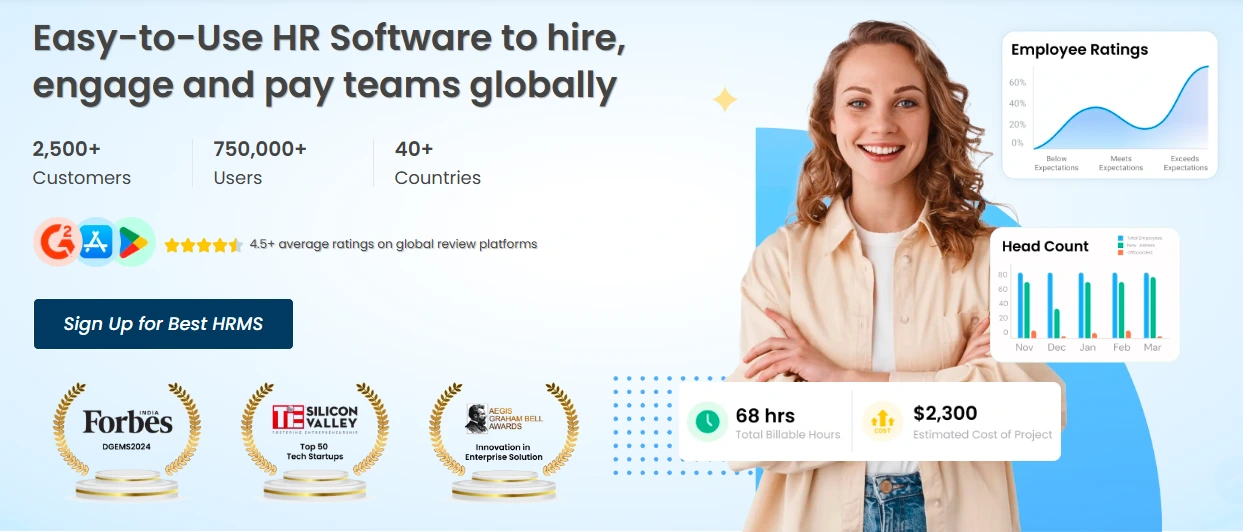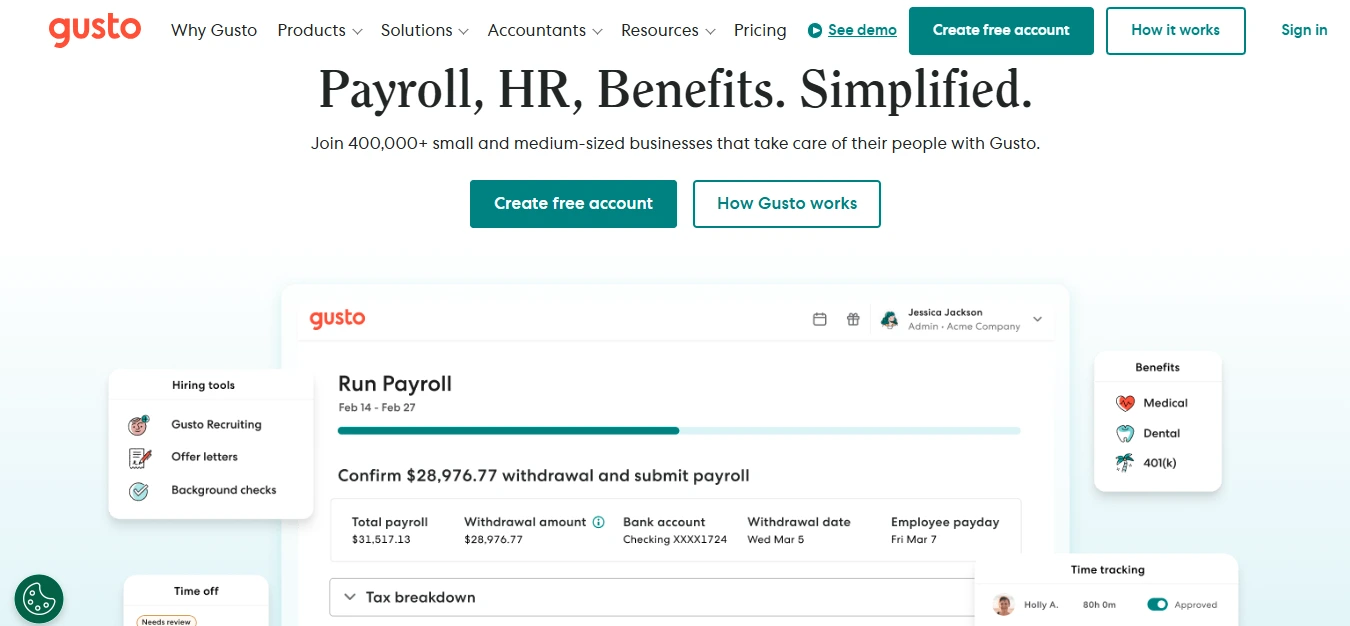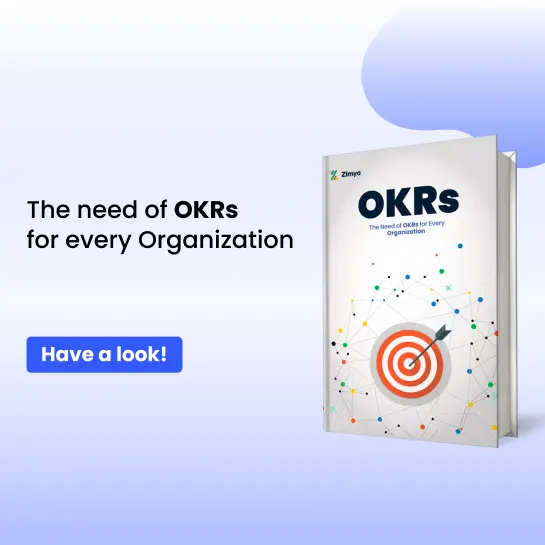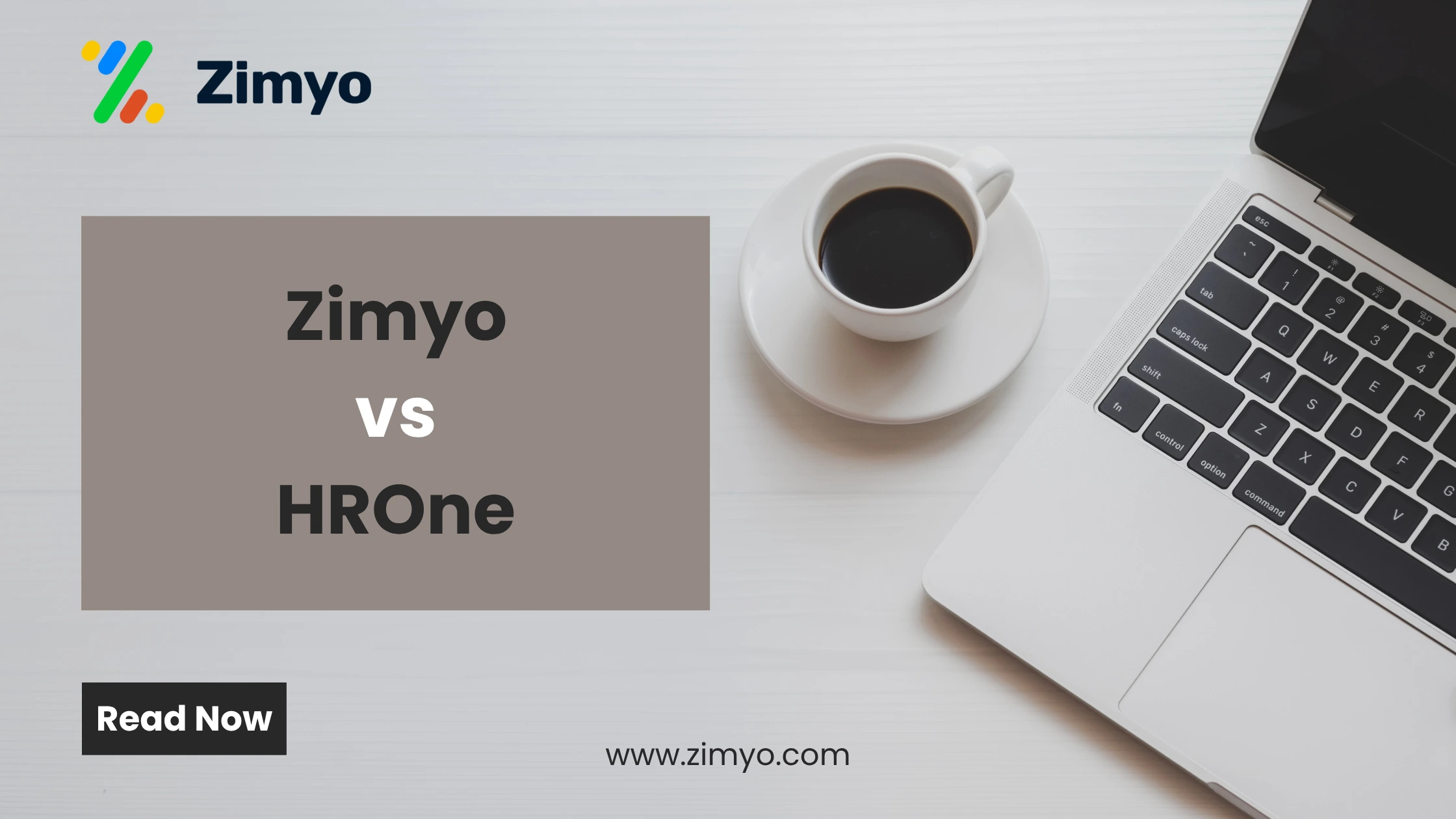Choosing the right cloud HR software can be confusing. With many options out there, two names often draw attention: Zimyo and Gusto. Each is strong in different niches. If you’re hunting for a side-by-side Zimyo vs Gusto comparison, this post walks you through features, pricing, pros/cons, and which might suit your business best.
Brief Introduction to Zimyo
Zimyo is a modern HRMS (Human Resource Management System) that aims to provide a “hire-to-retire” solution. It’s frequently adopted by small businesses, startups, and growing firms in the USA and beyond.

Zimyo’s appeal lies in delivering a compact, all-in-one HR suite: payroll, HR management (attendance, leave, document storage), performance management, and employee engagement, all wrapped in a user-friendly, cost-conscious package.
Brief Introduction to Gusto
Gusto (formerly known as ZenPayroll) is a well-known HR + payroll platform, especially in the U.S., that aims to simplify how small and medium businesses manage payroll, benefits, and HR.

Gusto positions itself as a “people platform”, not just payroll but the tools for hiring, onboarding, benefits, time tracking, and compliance. Its strength is a strong payroll engine, integrated benefits administration, and usability for U.S.-based businesses.
While Gusto’s core market is U.S. businesses, it also supports paying contractors internationally (e.g. in India) through its global contractor payments module.
Zimyo vs Gusto: Feature Comparison
Here’s a detailed look at how both platforms compare:
1. Core HR and Employee Management
- Zimyo: Provides employee database, onboarding, document storage, attendance, and leave tracking. Perfect for HR software for small business.
- Gusto: Primarily focused on payroll and benefits but includes essential HR tools like employee onboarding, document management, and time-off tracking. Ideal for small businesses needing a simple HR solution integrated with payroll.
2. Payroll Management
- Zimyo: Known as one of the best payroll software in USA for startups and SMEs. Supports payroll automation, tax compliance, and payslip generation.
- Gusto: One of the top payroll software for small businesses in the USA. Offers automated payroll runs, multi-state tax filing, direct deposit, contractor payments, and compliance support.
3. Performance and Engagement
- Zimyo: Includes OKRs, continuous feedback, and employee surveys, making it ideal for employee engagement and retention.
- Gusto: Offers basic performance tracking and employee feedback tools through integrations. However, its primary focus remains on payroll and benefits, not advanced performance management.
4. Integrations and Automation
- Zimyo: Provides essential integrations with accounting, productivity, and collaboration tools.
- Gusto: Integrates with popular tools like QuickBooks, Xero, Slack, and Asana. Automation features include auto payroll, compliance reminders, and benefits enrollment tracking.
5. Pricing
- Zimyo: Affordable and transparent, making it one of the best HR software for small businesses.
- Gusto: Offers tier-based pricing with multiple plans. While affordable for small businesses, advanced HR features require higher-tier plans.
According to Zimyo’s official website, their HRMS platform offers a comprehensive range of features, including employee information management, leave and attendance tracking, employee onboarding/offboarding processes, document management, and policy management.
6. Benefits and Compensation Management
- Zimyo: Allows configuration of salary structures, benefits like insurance and retirement savings, and handles voluntary deductions.
- Gusto: Provides access to integrated benefits such as health insurance, 401(k) retirement plans, life and disability coverage, and workers’ compensation, directly synced with payroll.
7. Applicant Tracking System (ATS)
- Zimyo: Offers a simple and affordable ATS, with resume parsing, interview scheduling, and offer letter automation. Designed for SMEs.
- Gusto: Does not have a built-in ATS but integrates with popular recruitment tools like JazzHR, Greenhouse, and Breezy HR to manage hiring and onboarding workflows.
8. Compliance and Security
- Zimyo: Ensures compliance with local tax and labor laws, especially useful for HRIS systems for small business in the USA.
- Gusto: Automatically handles federal, state, and local tax filings. Ensures compliance with wage laws and provides audit-ready reports. Uses bank-grade encryption and SOC 2 Type II security standards.
9. Scalability
- Zimyo: Best suited for organizations with 50–1000 employees, focusing on growing companies.
- Gusto: Best for small to mid-sized businesses (up to 500 employees). Not designed for large enterprises but scales well for fast-growing startups.
10. Ease of Use and Setup
- Zimyo: Very easy to set up and use, with a simple dashboard that requires minimal training. Ideal for small HR teams.
- Gusto: Highly intuitive with an excellent user experience. Setup is simple, and the platform provides guided onboarding steps. Perfect for teams without dedicated HR staff.
According to eLearning Industry, Gusto integrates HR, IT, and finance on a single platform, automating tasks such as payroll, onboarding, benefits, and management of devices.
Pros and Cons of Zimyo vs Gusto
Here’s a detailed list of Zimyo vs Gusto comparison to know where each shines, and where they might lag:
Feature | Zimyo | Gusto |
Pros |
|
|
Cons |
|
|
Which One Should You Choose?
Here’s how to decide between Zimyo vs Gusto comparison, depending on your circumstances:
- If you are a small or medium-sized company, especially in the U.S., and you want strong payroll + HR features with ease of use, Gusto might be your better pick, especially if your operations are U.S.-centric.
- If your priority is employee engagement, ease, and cost-effectiveness (especially in a region or country where Zimyo has good support), then Zimyo might provide more “bang for your buck” for the HR + performance side.
- If your business operates in multiple countries or with many contractors globally, Zimyo may struggle (depending on region), while Gusto’s contractor payments support helps—but Gusto might still fall short of full global payroll needs.
- If you want a quick-to-launch, easy HRIS system with limited complexity, Zimyo may have the edge; Gusto is quite user-friendly too, but you might find you only need core features at first.
- If payroll + compliance is mission-critical and mistakes are costly (especially for U.S. operations), Gusto’s strong track record in U.S. payroll & compliance is a compelling argument.
In short:
- Pick Zimyo when you want a cost-effective HRMS with engagement and performance built-in, especially if your needs are domestic or regionally supported.
- Pick Gusto when your HR + payroll needs are U.S.-centric, you want a trusted, polished payroll system with benefits, and you’re okay paying more for premium features and support.
Zimyo vs Gusto: Complete Comparison Table
When comparing Zimyo vs Gusto, it’s important to look at every feature side by side to understand which platform fits your business needs better. While both are considered among the Top HRIS Software and popular choices among HR Tech Companies in USA, they cater to slightly different audiences.
Zimyo is designed as an affordable HRIS system for small businesses and startups, offering core HR, payroll, performance management, and employee engagement in a simple and budget-friendly package.
Gusto, on the other hand, positions itself as a payroll-first HR software for small businesses. It combines payroll, benefits administration, and compliance tools in an intuitive and easy-to-use platform. Gusto focuses heavily on helping small businesses manage compensation, tax filings, and employee benefits effortlessly.
The table below provides a detailed feature comparison of Zimyo and Gusto, making it easy for you to see where each solution excels and which one best matches your organization’s size, goals, and budget.
Let’s line up both platforms and see how they differ (and where they overlap).
Feature / Capability | Zimyo | Gusto |
Core HR & Employee Management | Employee database, onboarding, document storage, attendance & leave tracking | Employee profiles, onboarding, self-service, teams & departments, HR tools |
Payroll Management | Automated payroll, tax compliance, payslip generation (for whatever geographies supported) | Full-service payroll: automated tax calculations, filings (federal, state, local), unlimited runs, multi-state support |
Performance & Engagement | OKRs, continuous feedback, surveys, recognition features (good for small teams) | Has performance & review tools, but these are less core — more “add-on” or extra modules than the primary appeal |
Integrations & Automation | Integration with accounting, productivity tools, HR ecosystem | Integrates with accounting (QuickBooks, Xero), time tracking, benefits, plus API & add-ons |
Benefits & Compensation | Configurable salary structures, deductions, benefits, etc. | Offers health benefits, 401(k), workers’ comp, and benefits administration integrated with payroll |
ATS / Recruitment | Basic ATS: resume parsing, interview scheduling, offer automation (for SMEs) | Recruitment & onboarding modules included in HR toolkit (job posts, offer letters) but not as robust as dedicated enterprise ATSs |
Compliance & Security | Local compliance, especially if your operations are concentrated; security typical for cloud HRMS | Strong U.S. compliance (tax, reporting), data security, keep up with changing laws; for international operations, limited unless via add-ons or contractors module |
Scalability | Best for small to mid-sized orgs (50–1,000 employees) | Suitable up to mid-sized; but might face limits or higher costs for very large, complex enterprises |
Ease of Use / Setup | Very user-friendly, quick to adopt, minimal training for HR teams | Known for clean UI, simple workflows, relatively easy setup in its core areas |
Global / International Support | Less strong in global payroll or multi-country compliance (depends on region) | Good for U.S. operations; international contractor payments are supported |
Payroll Runs / Flexibility | Likely supports multiple payroll runs (depends on package) | Unlimited payroll runs included in all plans (no extra charges for multiple runs) |
Conclusion
Both Zimyo and Gusto are among the best HR software in the USA, but they serve different purposes.
- Choose Zimyo if you want cloud HR software for small businesses or startups with strong employee engagement, performance management, and an all-in-one affordable solution.
- Choose Gusto if you need a reliable, easy-to-use payroll and benefits platform for small to mid-sized businesses, with automated tax compliance and U.S.-focused HR tools.
At the end of the day, the Zimyo vs Gusto comparison comes down to engagement and performance management (Zimyo) versus payroll and benefits automation (Gusto).
Frequently Asked Questions (FAQs)
What is the main difference between Zimyo and Gusto?
Zimyo is an all-in-one HRMS designed for small businesses and startups, with a focus on payroll, HR management, performance, and employee engagement. Gusto is a payroll-first HR platform for small to mid-sized businesses, focusing on payroll automation, benefits administration, and U.S.-based compliance.
Which software is better for small businesses?
Both are suitable, but Zimyo is ideal if you want integrated performance management and engagement tools, while Gusto is better if payroll accuracy and benefits administration are your top priorities.
Can Zimyo handle payroll for multiple countries?
Zimyo primarily supports local payroll in the USA and selected regions. For full multi-country payroll, Gusto’s international contractor payments may help, but it’s mostly U.S.-focused.
Does Gusto provide employee engagement tools like Zimyo?
Gusto offers basic performance and review tools, but advanced engagement features like OKRs, surveys, and recognition are more comprehensive in Zimyo.
How do Zimyo and Gusto compare in terms of compliance and security?
Zimyo ensures compliance with local labor and tax laws. Gusto excels in U.S. compliance, federal/state tax filings, and secure data management (SOC 2 Type II standards).
Which platform is easier to set up and use?
Both Zimyo and Gusto are user-friendly. Zimyo is simple for HR teams with limited technical expertise, while Gusto is intuitive for payroll-focused operations.
Can both Zimyo and Gusto manage benefits and compensation?
Yes. Zimyo allows configuration of salary structures, insurance, retirement savings, and deductions. Gusto offers integrated benefits such as health insurance, 401(k), workers’ comp, and payroll-linked administration.
Does Gusto have an Applicant Tracking System (ATS)?
Gusto does not have a built-in enterprise-grade ATS. It integrates with third-party recruitment tools like JazzHR, Greenhouse, and Breezy HR. Zimyo provides a simple ATS suitable for SMEs.
Which software is more scalable for growing companies?
Zimyo works well for organizations with 50–1,000 employees. Gusto is suitable for small to mid-sized businesses but may face limitations for very large enterprises.
How do I choose between Zimyo and Gusto for my business?
Choose Zimyo if you want a cost-effective HRMS with strong engagement and performance management. Choose Gusto if your priority is accurate, automated payroll, benefits management, and U.S.-focused compliance for small to mid-sized businesses.









